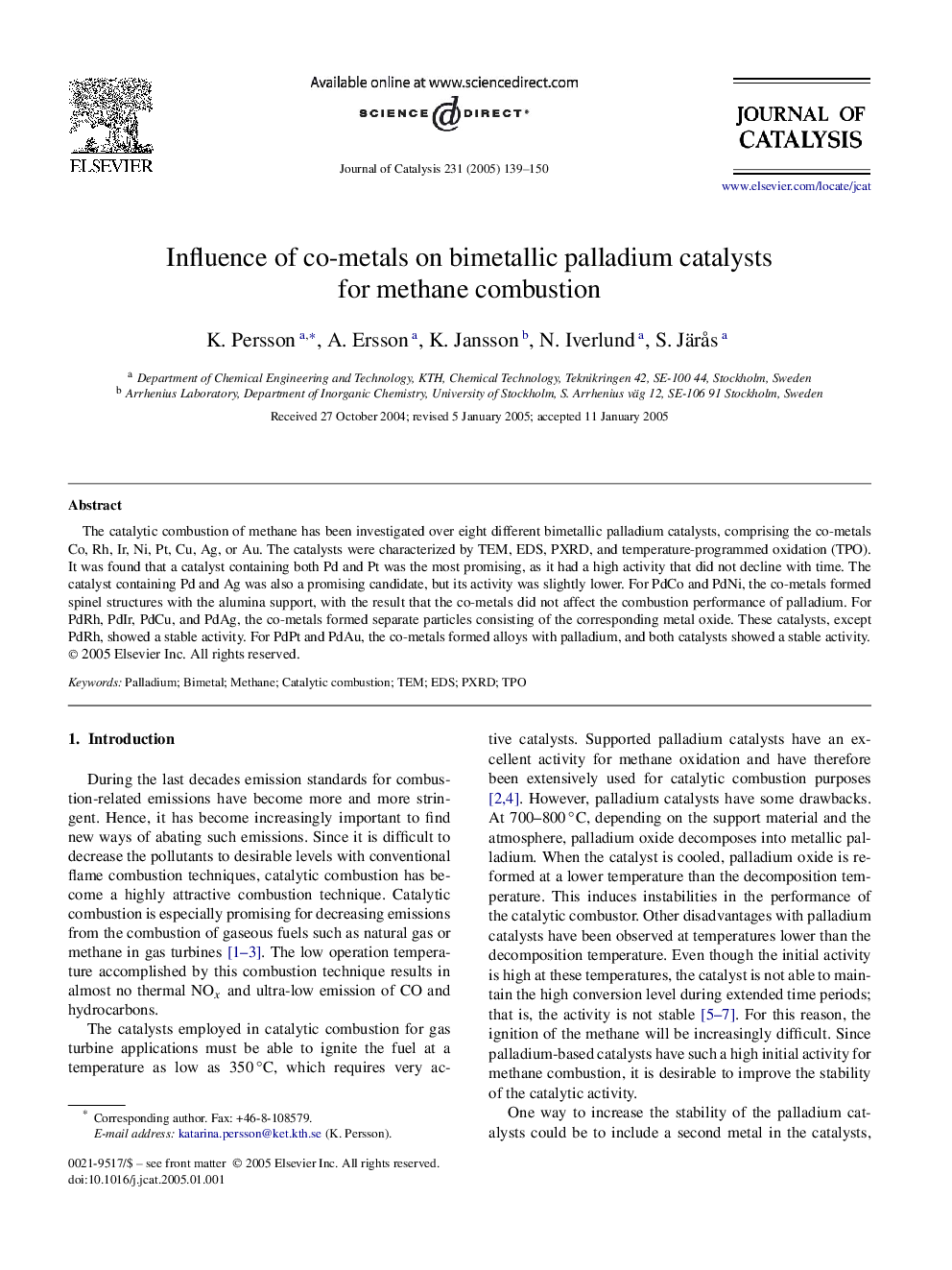| Article ID | Journal | Published Year | Pages | File Type |
|---|---|---|---|---|
| 10244725 | Journal of Catalysis | 2005 | 12 Pages |
Abstract
The catalytic combustion of methane has been investigated over eight different bimetallic palladium catalysts, comprising the co-metals Co, Rh, Ir, Ni, Pt, Cu, Ag, or Au. The catalysts were characterized by TEM, EDS, PXRD, and temperature-programmed oxidation (TPO). It was found that a catalyst containing both Pd and Pt was the most promising, as it had a high activity that did not decline with time. The catalyst containing Pd and Ag was also a promising candidate, but its activity was slightly lower. For PdCo and PdNi, the co-metals formed spinel structures with the alumina support, with the result that the co-metals did not affect the combustion performance of palladium. For PdRh, PdIr, PdCu, and PdAg, the co-metals formed separate particles consisting of the corresponding metal oxide. These catalysts, except PdRh, showed a stable activity. For PdPt and PdAu, the co-metals formed alloys with palladium, and both catalysts showed a stable activity.
Related Topics
Physical Sciences and Engineering
Chemical Engineering
Catalysis
Authors
K. Persson, A. Ersson, K. Jansson, N. Iverlund, S. JärÃ¥s,
